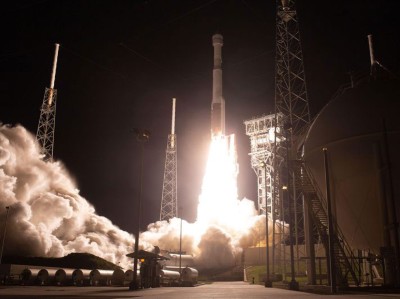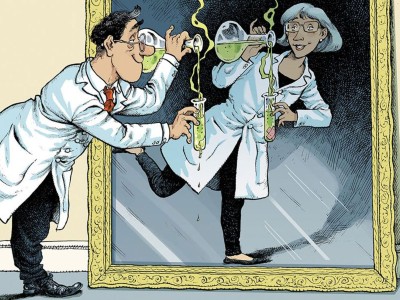
DARPA, which helped lay the foundations of the B-2 stealth aircraft, is funding replications of some of its studies.Credit: SrA Thomas Barley/DVIDS
The government of UK Prime Minister Boris Johnson is racing ahead with plans for an Advanced Research Projects Agency (ARPA), modelled on the US original. The country is looking to boost technological competitiveness as it withdraws from the European Union. Precise details of its ARPA plans are yet to be revealed, but the available funding is expected to come to around £800 million (US$1 billion) over 5 years.
The US Defense Advanced Research Projects Agency (DARPA), which supports ambitious technologies for military objectives, was launched in 1958 by president Dwight Eisenhower. The impetus was the Soviet Union’s 1957 launch of the first artificial satellite, Sputnik, which demonstrated a level of technological prowess that shocked Western nations. Eisenhower’s ambition for DARPA — established in the same year as NASA — was that the US military would never again be left behind in this way.
DARPA’s best-known investments include research on the first global satellite-navigation system (known as Transit), stealth aircraft and the Internet’s precursor, ARPANET. Today, the many projects funded by the agency include work on developing treatments to regrow severed limbs.
NASA soars and others plummet in Trump’s budget proposal
DARPA spends about $3.5 billion a year, which is less than 1% of the total US public and private research and development budget. It’s a small enough proportion to justify DARPA’s reputation for taking on riskier ideas and having a higher tolerance for failure than conventional funding agencies. One idea that famously didn’t make it was the hafnium bomb, based on the flawed belief that large amounts of energy can be released by bombarding the isotope hafnium-178 with X-rays.
Although DARPA’s research programme managers have relatively more flexibility in what research to fund and how, no country has been able to replicate the scale of the agency’s success. Even in the United States its achievements remain unrivalled. A different advanced research projects agency for new energy technologies (ARPA-E) — launched in 2009 — is under constant threat of being eliminated by the administration of President Donald Trump.
One reason why DARPA is so hard to replicate, says DARPA historian Sharon Weinberger, is because the agency’s projects have a resource that the others lack. “They have a customer with the deepest pockets in the world,” she says. The US Department of Defense’s annual budgets for research and procurement, totalling $190 billion, enable it to fund successful prototypes on a large scale, to test whether they might be commercially viable.
Risk management
A closer look at DARPA shows how its managers pursue bold ideas while controlling risk. In a Comment article, members of a team working with — and in — the agency’s Biological Technologies Office in Arlington, Virginia, report on an initiative launched in 2016. This assigns an independent validation team to projects to troubleshoot and reproduce research proposals. This ‘shadow team’ meets with the ‘performing team’ to learn the precise protocols and establish the necessary conditions to reproduce projects, and the two groups make joint presentations to the programme manager on progress.
The work is hard — one project took as long as 20 months to reproduce. It is also expensive: it costs between 3% and 8% of a programme’s funds to make sure the technologies work. But programme managers say it is worth the investment, and the model demonstrates a more careful side to the agency than DARPA’s daring image tends to evoke.
A controlled trial for reproducibility
These efforts are instructive, both for dreams of a UK ARPA and for science overall. Some of UK ARPA’s supporters would like to see cutting-edge technologies developed within 15 years — and a certain ruthlessness when it comes to axing the least promising ones. But an ambitious technology goal in, say, regenerative medicine or remote sensing will probably need longer before careful study can make the promises — and risks — clear.
Researchers, their managers in universities, and funding agencies all understand why effective due diligence is essential to projects. But it can be difficult for these voices to be heard when no less than the prime minister’s office celebrates ARPA as “high-risk, high-pay-off research”, and characterizes bureaucracy as “form-filling”.
Any nation looking to replicate DARPA must realize that you can’t reap the rewards of high-risk research without investing in meticulous preparation and verification. The freedom to pursue bold ideas comes with added responsibility.

 A controlled trial for reproducibility
A controlled trial for reproducibility
 What ‘data thugs’ really need
What ‘data thugs’ really need
 NASA soars and others plummet in Trump’s budget proposal
NASA soars and others plummet in Trump’s budget proposal








